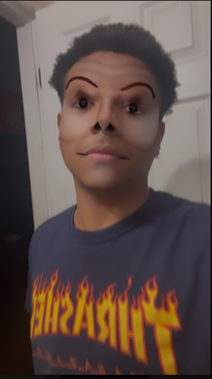
The uncanny valley is a term that describes a relationship between an emotional response in humans and humanlike robots. It is a phenomenon where people feel a sense of revulsion and anxiety to highly realistic humanoid robots and animation—initially coined by Masahiro Mori, a Japanese robotics professor. He initially describes the response as an unease in Bukimi No Tani, written in 1970. Later, it was translated into The Uncanny Valley by Jasia Reichardt in her book “Robots, Facts, Fiction Prediction”, written in 1978. Recently, The Uncanny Valley trended across social media platforms like Twitter, TikTok, and Instagram. Users compare nostalgic movies that used earlier stages of CGI and AI animation to the creepy and uneasy feeling they felt with humanlike robots. Users trend movies like The Polar Express, Avatar, Star Wars, Beowulf, and the Incredible Hulk. Amidst these trends, makeup artists across these platforms attempt to mimic the unease and creepiness in these characters through makeup. Artists like Lindsey from LinsMakeupLook popularized these trends by intentionally resembling simple humanlike robotic designs that reached the attention of millions. Rebbecca Pearson, a professional makeup artist, says, ‘I have heard about this uncanny valley trend, and it is exciting. As makeup artists, we perfect our art to display a positive feeling, usually for big occasions or events. These young people are changing the point of makeup, and it is amazing.” She explains and recounts her own experience with the uncanny valley, saying, “You must recognize that this is a severe emotional response people feel; you must acknowledge and cater to these feelings to make more modern advancements in technology and robotics, at least that is how I see it.”
CGI or computer-generated imagery created a shift in television within the 1950s, where Vertigo, the first computer-generated animation, was documented. Johnny Whitney, a digital art and animation pioneer, animated these intricate and complex patterns and is accredited as one of the first American computer animators. Basic colorful patterns emphasize and highlight different points within a story, completing and intertwining basic shapes merged over video. The 1960s Sine Curve Man demonstrates morphing: hand-drawn blending techniques to transition additional images to one another smoothly. The 1990s had completed many technological advancements when movies like Juarriac Park, Terminator Two, The Matrix, and The ET trended for their use of CGI and computer animation. Watchers were amazed at the complex animation beyond anything they had ever seen, even trending ET in recent years for the uneasy and scary computer-animated design.
Humans innately create things for functionality and affinity. Industrial and functional robots expand less on creative expression and appearances, while other industries focus more on making robots more human. In health and science, a prosthetic hand will be intentionally created for affinity for humans, having veins, hair, fingernails, prints, and customized color matching. Business directors in robotics and AI understand the importance of technological advancements and affinity. Bennett Lomax Sr, CEO of Prime Image, an AI software enterprise, says, “It is important to understand the hesitation people feel when working in robotics or even AI, but it is essential to continue to build around affinity to continue to make technological advancements.” The uncanny valley unease people have felt for generations. Understanding and expanding these feelings will continue to make technical and artistic advancements in modern society.





